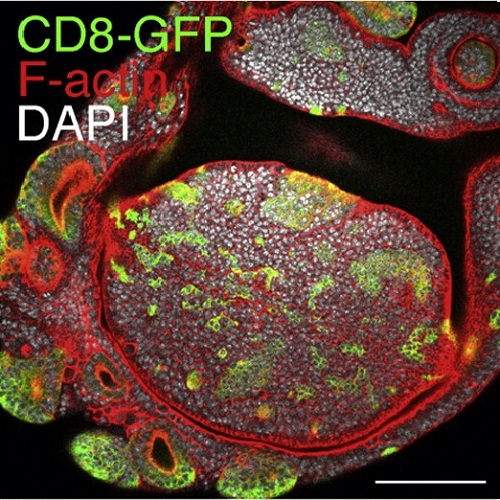Wingless signaling and the control of cell shape in Drosophila wing imaginal discs.
The control of cell morphology is important for shaping animals during development. Here we address the role of the Wnt/Wingless signal transduction pathway and two of its target genes, vestigial and shotgun (encoding E-cadherin), in controlling the columnar shape of Drosophila wing disc cells. We show that clones of cells mutant for arrow (encoding an essential component of the Wingless signal transduction pathway), vestigial or shotgun undergo profound cell shape changes and are extruded towards the basal side of the epithelium. Compartment-wide expression of a dominant-negative form of the Wingless transducer T-cell factor (TCF/Pangolin), or double-stranded RNA targeting vestigial or shotgun, leads to abnormally short cells throughout this region, indicating that these genes act cell autonomously to maintain normal columnar cell shape. Conversely, overexpression of Wingless, a constitutively-active form of the Wingless transducer beta-catenin/Armadillo, or Vestigial, results in precocious cell elongation. Co-expression of Vestigial partially suppresses the abnormal cell shape induced by dominant-negative TCF. We conclude that Wingless signal transduction plays a cell-autonomous role in promoting and maintaining the columnar shape of wing disc cells. Furthermore, our data suggest that Wingless controls cell shape, in part, through maintaining vestigial expression.

- Dev. Biol. 2009 Oct 1;334(1):161-73
- 2009
- Developmental Biology
- 19627985
- PubMed
Enabled by:
